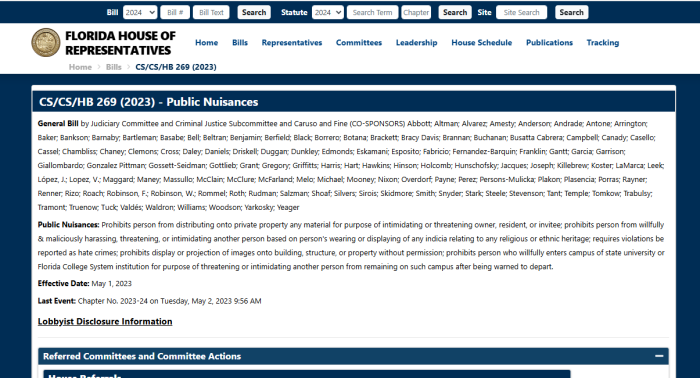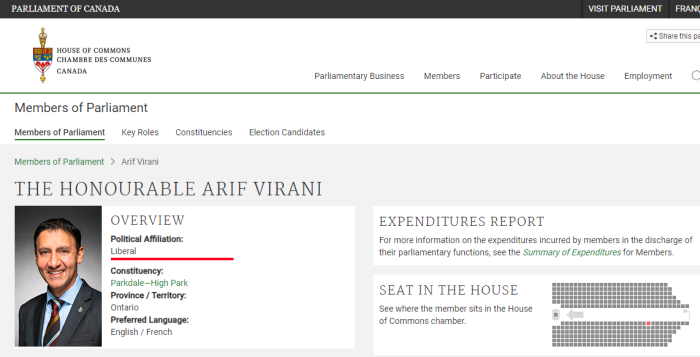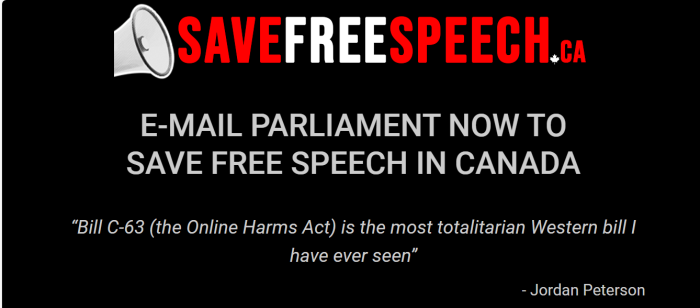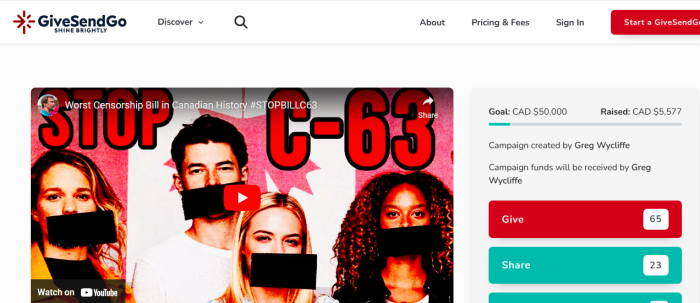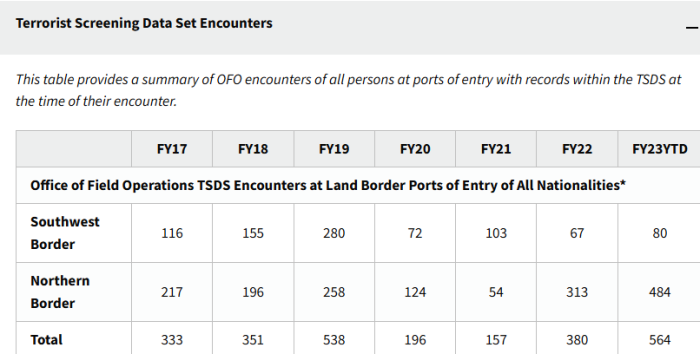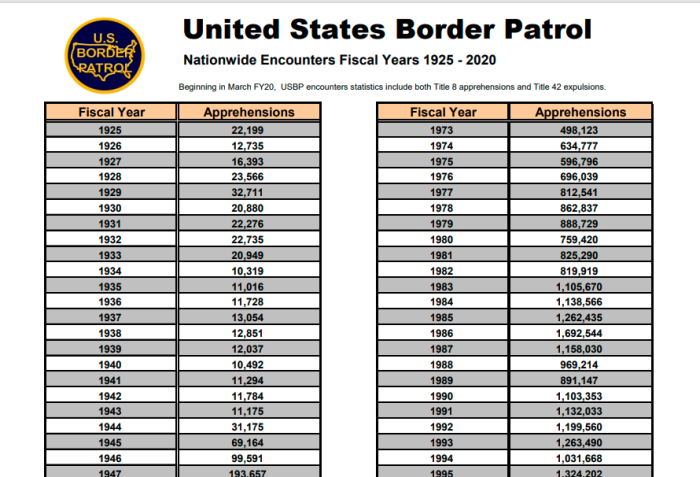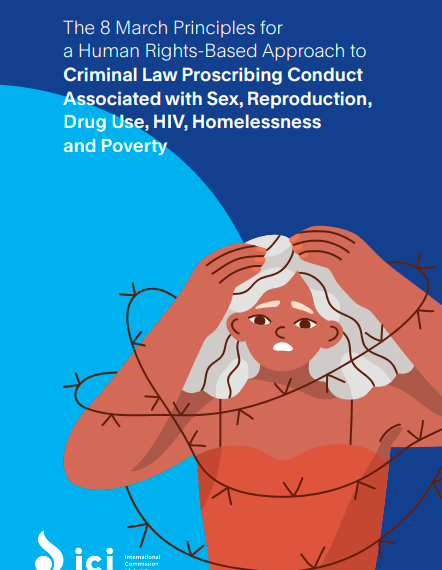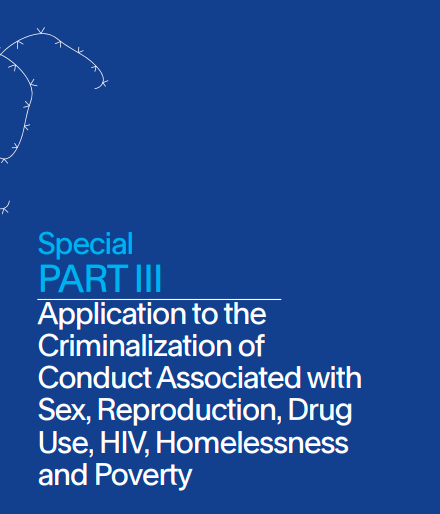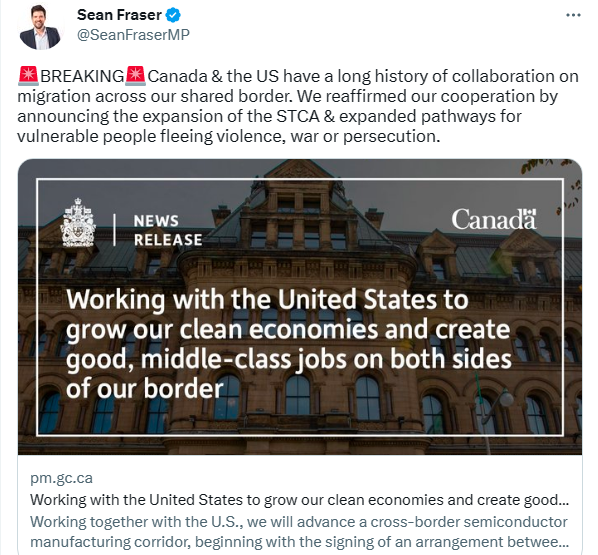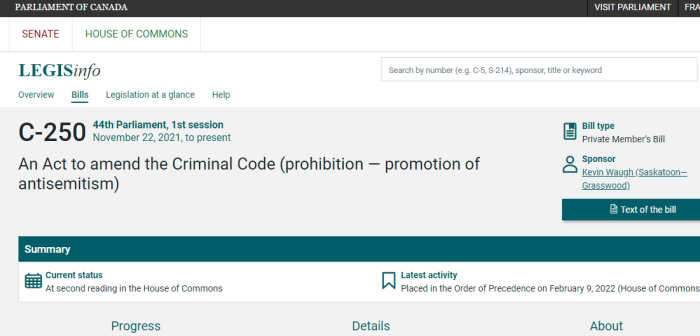
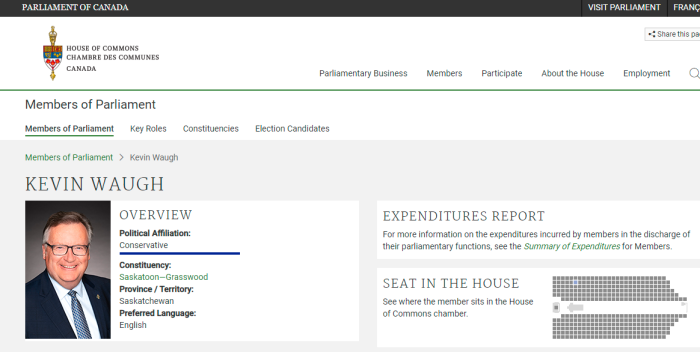
A week ago, Ursula Haverbeck died. She was the 96 year old German woman who had gone to prison for publicly denying the Holocaust. While the major media coverage about her is overwhelmingly negative, she chose to stand for her beliefs. It’s really rare to see something like that these days.
Kevin Waugh, a “Conservative” Member of Parliament in Canada, introduced Bill C-250 back in 2022. This would put people in prison for up to 2 years for Holocaust denial. Far from being condemned, his actions were publicly lauded.
Leah Gazan, of the New Democratic Party, introduced Bill C-413 in October 2024. It was heavily modeled on Bill C-250, and would imprison people for up to 2 years for Residential School “denialism”.
At all levels of government in this country, politicians work to strip away freedom of speech under the guise of “fighting hatred”. This cuts across party lines, and isn’t limited to just a few. It also seems that outside influences appear to be guiding these efforts.
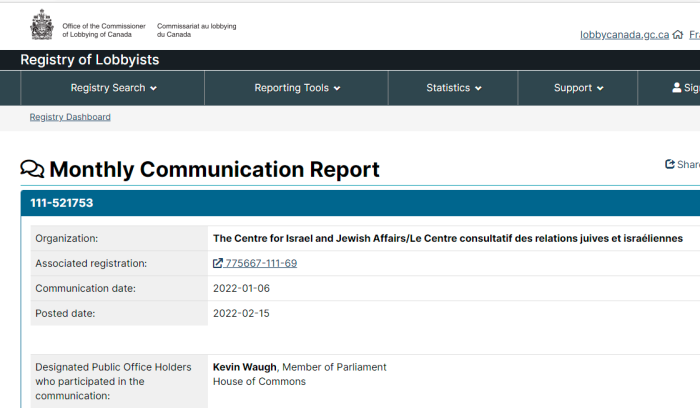

According to records from Office of the Conflict of Interest and Ethics Commissioner, Waugh, and his wife, Ann, received a trip in 2018 worth $16,244.42 to Israel. This kind of travel is promoted as “fostering professional/cultural understanding, and meeting counterparts”.
Yes, this was just $16,000. The breakdown is as follows:
- Transportation: $7,503.50
- Accommodation: $2,928.84
- Other: $5,812.09
This was sponsored by CIJA, the Centre for Israel and Jewish Affairs. It’s essentially the Canadian equivalent of AIPAC. Previously, the Canada-Israel Committee organized such annual trips, and their roster is full of prominent names. Believe it or not, this sort of thing isn’t illegal at all. In fact, it appears that Members of Parliament from all parties take part in it. By comparison, Trudeau ended up getting fined for his vacation with Aga Khan.
Waugh met with CIJA on February 15th, 2022. He had introduced Bill C-250 just days earlier, on February 9th. He’d probably deny the connection, but this is extremely unlikely to be any sort of coincidence. The Bill was ultimately abandoned when the substance was embedded into a Budget Bill.
Waugh takes a free trip to Israel in 2018. A few years later, he does the bidding of CIJA to introduce criminal penalties to Holocaust denial. Coincidence?
While it’s certainly true that Canadian politicians accept paid travel to other countries, none appear to even come close to the scale that occurs with Israel.

Germany lost a woman who was willing to go to prison for her beliefs. By contrast, Canadian politicians are implementing similar laws here in return for a free vacation. These people are nothing alike.
Yves-François Blanchet (Bill C-367) and Alexis Brunelle-Duceppe (Bill C-373) of the Bloc Québécois get honourable mentions for their work in eroding religious freedoms.
Maxime “The U.N. needs to shut up” Bernier has been completely silent on these issues, despite reinventing himself as a populist and free speech champion in 2018.
| NUMBER | NAME | PARTY | YEAR | VALUE |
|---|---|---|---|---|
| 1 | DeBellefeuille, Claude | BQ | 2007 | $8,661.12 |
| 2 | Dykstra, Rick | CPC | 2007 | $8,602.30 (USD) |
| 3 | Godin, Yvon | NDP | 2007 | $4,094.83 (USD) |
| 4 | Pearson, Glen | LPC | 2007 | $8,728.18 |
| 5 | Savage, Michael | LPC | 2007 | $5,612.54 |
| 6 | Simard, Raymond | LPC | 2007 | $8,188.00 (USD) |
| 7 | Smith, Joy | CPC | 2007 | $8,661.12 |
| 8 | Stoffer, Peter | NDP | 2007 | $8,728.18 |
| 9 | Sweet, David | CPC | 2007 | $7,374.72 (USD) |
| 10 | Van Kesteren, Dave | CPC | 2007 | $8,728.18 |
| 11 | Warkentin, Chris | CPC | 2007 | $7,973.54 |
| NUMBER | NAME | PARTY | YEAR | VALUE |
|---|---|---|---|---|
| 1 | Allison, Dean | CPC | 2008 | $9,411.00 |
| 2 | Bennett, Carolyn | LPC | 2008 | $7,961.00 |
| 3 | Breitkreuz, Garry | CPC | 2008 | $7,963.00 |
| 4 | Brunelle, Paule | BQ | 2008 | $7,961.00 |
| 5 | Crête, Paul | BQ | 2008 | $10,944.00 |
| 6 | Dhaliwal, Sukh | LPC | 2008 | $8,758 |
| 7 | Duceppe, Gilles | BQ | 2008 | $17,577.56 |
| 8 | Goodyear, Gary | CPC | 2008 | $10,944.00 |
| 9 | Guimond, Michel | BQ | 2008 | $8,728.18 |
| 10 | Ignatieff, Michael | LPC | 2008 | $8,602.30 |
| 11 | Kramp, Daryl | CPC | 2008 | $9,446.00 |
| 12 | Lunney, James | CPC | 2008 | $7,961.00 |
| 13 | Martin, Pat | LPC | 2008 | $7,961.00 |
| 14 | McCallum, John | LPC | 2008 | $10,944.00 |
| 15 | Ménard, Serge | BQ | 2008 | $7,971.00 |
| 16 | Mulcair, Thomas | NDP | 2008 | $7,963.00 |
| 17 | Nash, Peggy | NDP | 2008 | $9,411.00 |
| 18 | Neville, Anita | LPC | 2008 | $7,961.00 |
| 19 | Redman, Karen | LPC | 2008 | $11,785 |
| 20 | Roy, Jean-Yves | BQ | 2008 | $7.961.00 |
| 21 | Silva, Mario | LPC | 2008 | $7,992.33 |
| 22 | Sweet, David | CPC | 2008 | $7,961.00 |
| 23 | Wasylycia-Leis, Judy |
NDP | 2008 | $7,961.00 |
| NUMBER | NAME | PARTY | YEAR | VALUE |
|---|---|---|---|---|
| 1 | Brown, Gord | CPC | 2009 | $6,440.00 |
| 2 | Cannan, Ron | CPC | 2009 | $9,446.00 |
| 3 | Coderre, Denis | LPC | 2009 | $10,239.22 |
| 4 | Cotler, Irwin | LPC | 2009 | $1,439.30 |
| 5 | Dechert, Bob | CPC | 2009 | $3,983.00 |
| 6 | Desnoyers, Luc | BQ | 2009 | $5,520.00 |
| 7 | Devolin, Barry | CPC | 2009 | $9,446.00 |
| 8 | Garneau, Mar | LPC | 2009 | $7,843.00 |
| 9 | Glover, Shelly | CPC | 2009 | $7,843.66 |
| 10 | Hoback, Randy | CPC | 2009 | $7,493.62 |
| 11 | Hoeppner, Candice | CPC | 2009 | $7,843.00 |
| 12 | Holland, Mark | LPC | 2009 | $9,446.00 |
| 13 | Laforest, Jean-Yves | BQ | 2009 | $9,086.22 |
| 14 | Lemieux, Pierre | CPC | 2009 | $7,493.62 |
| 15 | Marston, Wayne | NDP | 2009 | $7,493.62 |
| 16 | Mendes, Alexandra | LPC | 2009 | $7,253.64 |
| 17 | Oliphant, Robert | LPC | 2009 | $10,602.00 |
| 18 | Rae, Bob | LPC | 2009 | $3,804.80 |
| 19 | Uppal, Tim | CPC | 2009 | $7,843.00 |
| NUMBER | NAME | PARTY | YEAR | VALUE |
|---|---|---|---|---|
| 1 | Block, Kelly | CPC | 2010 | $8,451.30 |
| 2 | Del Mastro, Dean | CPC | 2010 | $7,956.22 |
| 3 | Duncan, John | CPC | 2010 | $6,435.34 |
| 4 | Fast, Ed | CPC | 2010 | $9,006.68 |
| 5 | Laforest, Jean-Yves | BQ | 2010 | $9,086.22 |
| 6 | Paillé, Daniel | BQ | 2010 | $7,904.51 |
| 7 | Rathgeber, Brent | CPC | 2010 | $9,078.16 |
| 8 | Saxton, Andrew | CPC | 2010 | $8,684.01 |
| 9 | Simms, Scott | LPC | 2010 | $8,770.68 |
| 10 | Thibeault, Glenn | NDP | 2010 | $8,906.68 |
| 11 | Watson, Jeff | CPC | 2010 | $9,586.18 |
| NUMBER | NAME | PARTY | YEAR | VALUE |
|---|---|---|---|---|
| 1 | Adler, Mark | CPC | 2011 | $5,920.31 |
| 2 | Bezan, James | CPC | 2011 | $10,781.52 |
| 3 | Brison, Scott | LPC | 2011 | $8,820.48 |
| 4 | Cotler, Irwin | LPC | 2011 | $5,700.00 |
| 5 | Cuzner, Rodger | LPC | 2011 | $9,397.33 |
| 6 | Foote, Judy | LPC | 2011 | $5,030.08 |
| 7 | LeBlanc, Dominic | LPC | 2011 | $14,680.00 |
| 8 | Miller, Larry | CPC | 2011 | $10,525.04 |
| 9 | Murray, Joyce | LPC | 2011 | $8,580.00 |
| 10 | Ravignat, Mathieu | NDP | 2011 | $7,281.39 |
| 11 | Shipley, Bev | CPC | 2011 | $5,370.04 |
| NUMBER | NAME | PARTY | YEAR | VALUE |
|---|---|---|---|---|
| 1 | Ambler, Stella | CPC | 2012 | $10,238.84 |
| 2 | Blanchette-Lamothe, Lysane | NDP | 2012 | $9,209.84 |
| 3 | Caron, Guy | NDP | 2012 | $8,226.84 |
| 4 | Chisholm, Robert | NDP | 2012 | $10,016.28 |
| 5 | Cleary, Ryan | NDP | 2012 | $6,030.00 |
| 6 | Davies, Don | NDP | 2012 | $10,677.68 |
| 7 | James, Roxanne | CPC | 2012 | $7,059.14 |
| 8 | Lapointe, François | NDP | 2012 | $11,740.46 |
| 9 | Larose, Jean-François | NDP | 2012 | $9,031.84 |
| 10 | Lunney, James | CPC | 2012 | $3,992 |
| 11 | Nicholls, Jamie | NDP | 2012 | $7,808.28 |
| 12 | Papillon, Annick | NDP | 2012 | $9,031.84 |
| 13 | Rafferty, John | NDP | 2012 | $10,161.68 |
| 14 | Trottier, Bernard | CPC | 2012 | $9,856.28 |
| 15 | Williamson, John | CPC | 2012 | $9,961.96 |
| 16 | Young, Terence | CPC | 2012 | $10,389.22 |
| NUMBER | NAME | PARTY | YEAR | VALUE |
|---|---|---|---|---|
| 1 | Aspin, Jay | CPC | 2013 | $11,165.60 |
| 2 | Bateman, Joyce | CPC | 2013 | $7,915.48 |
| 3 | Bruinooge, Rod | CPC | 2013 | $9,937.98 |
| 4 | Clarke, Rob | CPC | 2013 | $11,165.60 |
| 5 | Easter, Wayne | LPC | 2013 | $9,786.96 |
| 6 | Lamoureux, Kevin | LPC | 2013 | $10,053.40 |
| 7 | Lunney, James | CPC | 2013 | $5,032.71 |
| 8 | Menegakis, Costas | CPC | 2013 | $10,490.70 |
| 9 | Michaud, Élaine | NDP | 2013 | $8,185.48 |
| 10 | Scott, Craig | NDP | 2013 | $10,892.92 |
| 11 | Young, Wai | CPC | 2013 | $12,683.80 |
| NUMBER | NAME | PARTY | YEAR | VALUE |
|---|---|---|---|---|
| 1 | Bélanger, Mauril | LPC | 2014 | $9,537.50 |
| 2 | Bennett, Carolyn | LPC | 2014 | $3,981.61 |
| 3 | Byrne, Gerry | LPC | 2014 | $12,580.74 |
| 4 | Falk, Ted | CPC | 2014 | $12,450.71 |
| 5 | Hoback, Randy | CPC | 2014 | $5,092.21 |
| 6 | Jones, Yvonne | LPC | 2014 | $11,935 |
| 7 | Morin, Isabelle | NDP | 2014 | $9,782.96 |
| 8 | Opitz, Ted | CPC | 2014 | $5,026.24 |
| 9 | Sandhu, Jasbir | NDP | 2014 | $14,679.57 |
| 10 | Sweet, David | CPC | 2014 | $4,915.36 |
| 11 | Wilks, David | CPC | 2014 | $8,608.12 |
| NUMBER | NAME | PARTY | YEAR | VALUE |
|---|---|---|---|---|
| 1 | Lunney, James | INDEPENDENT | 2015 | $3,285.89 |
| NUMBER | NAME | PARTY | YEAR | VALUE |
|---|---|---|---|---|
| 1 | Albas, Dan | CPC | 2016 | $12,750 |
| 2 | Blaney, Steven | CPC | 2016 | $5,616.78 |
| 3 | Di Iorio, Nicola | LPC | 2016 | $6,930.36 |
| 4 | Dubé, Matthew | NDP | 2016 | $12,342.24 |
| 5 | Fillmore, Andy | LPC | 2016 | $10,294.97 |
| 6 | Fuhr, Stephen | LPC | 2016 | $11,207.65 |
| 7 | Garrison, Randall | NDP | 2016 | $7,800.22 |
| 8 | Genuis, Garnett | CPC | 2016 | $12,650.80 |
| 9 | Gladu, Marilyn | CPC | 2016 | $9,394.06 |
| 10 | Godin, Joël | CPC | 2016 | $11,929.56 |
| 11 | Grewal, Ra | LPC | 2016 | $9,391.15 |
| 12 | Lefebvre, Paul | LPC | 2016 | $10,236.50 |
| 13 | Levitt, Michael | LPC | 2016 | $9,393.35 |
| 14 | Longfield, Lloyd | LPC | 2016 | $11,379.11 |
| 15 | Mendicino, Marco | LPC | 2016 | $6,714.00 |
| 16 | O’Regan, Seamus | LPC | 2016 | $11,186.79 |
| 17 | Raitt, Lisa | CPC | 2016 | $8,643.72 |
| 18 | Rankin, Murray | NDP | 2016 | $9,495.06 |
| 19 | Rayes, Alain | CPC | 2016 | $10,705.65 |
| 20 | Rempel, Michelle | CPC | 2016 | $6,296.13 |
| 21 | Richards, Blake | CPC | 2016 | $7,880.54 |
| 22 | Rioux, Jean | LPC | 2016 | $11,137.02 |
| 23 | Ruimy, Dan | LPC | 2016 | $6,841.14 |
| 24 | Sorbara, Francesco | LPC | 2016 | $10,350 |
| NUMBER | NAME | PARTY | YEAR | VALUE |
|---|---|---|---|---|
| 1 | Brosseau, Ruth Ellen | NDP | 2017 | $11,705.62 |
| 2 | Calkins, Blaine | CPC | 2017 | $11,492.23 |
| 3 | Dhillon, Anju | LPC | 2017 | $9,550.21 |
| 4 | Hardcastle, Cheryl | NPD | 2017 | $9,522.18 |
| 5 | Harder, Rachael | CPC | 2017 | $7,410.21 |
| 6 | Maloney, James | LPC | 2017 | $14,116.86 |
| 7 | McCauley, Kelly | CPC | 2017 | $12,724/81 |
| 8 | Nuttall, Alexander | CPC | 2017 | $10,423.31 |
| 9 | O’Connell, Jennifer | LPC | 2017 | $11,375.14 |
| 10 | Romanado, Sherry | LPC | 2017 | $11,840.21 |
| 11 | Rusnak, Don | LPC | 2017 | $14,013.00 |
| 12 | Sarai, Randeep | LPC | 2017 | $11,806.43 |
| 13 | Schulte, Deborah | LPC | 2017 | $15,238.90 |
| 14 | Zimmer, Bob | CPC | 2017 | $12,437.04 |
| NUMBER | NAME | PARTY | YEAR | VALUE |
|---|---|---|---|---|
| 1 | Amos, William | LPC | 2018 | $11,245.24 |
| 2 | Brosseau, Ruth Ellen | NDP | 2018 | $2977.22 |
| 3 | Fergus, Greg | LPC | 2018 | $8,696.85 |
| 4 | Kusie, Stephanie | CPC | 2018 | $13,390.91 |
| 5 | McLeod, Cathy | CPC | 2018 | $7,721.70 |
| 6 | Ng, Mary | LPC | 2018 | $7,355.84 |
| 7 | Oliver, John | LPC | 2018 | $7,197.11 |
| 8 | O’Toole, Erin | CPC | 2018 | $7,884,47 |
| 9 | Schmale, Jamie | CPC | 2018 | $7,286.99 |
| 10 | Sikand, Gagan | LPC | 2018 | $7,150.00 |
| 11 | Stubbs, Shannon | CPC | 2018 | $14,212.93 |
| 12 | Sweet, David | CPC | 2018 | $1,116.22 |
| 13 | Vandal, Dan | LPC | 2018 | $9,282.93 |
| 14 | Waugh, Kevin | CPC | 2018 | $16,244.42 |
Palestinian Authority and the Canadian Palestinian Foundation of Quebec
(2018) Brosseau, Ruth Ellen
(2018) Boulerice, Alexandre
(2018) Caron, Guy
(2018) Casey, Bill
(2018) Chen, Shaun
(2018) Davies, Don
(2018) Genuis, Garnett
(2018) Johns, Gord
(2018) Mathyssen, Irene
(2018) McDonald, Ken
(2018) Ouellette, Robert-Falcon
(2018) Stetski, Wayne
(2018) Tabbara, Marwan
(2018) Tan, Geng
International Democratic Union (IDU)
(2018) Tony Clement
Foreign Affairs Department, The Knesset, Jerusalem
(2018) Sweet, David
| NUMBER | NAME | PARTY | YEAR | VALUE |
|---|---|---|---|---|
| 1 | Lapointe, Linda | LPC | 2019 | $13,552.80 |
March Of Dimes
(2019) Barlow, John
(2019) Damoff, Pam
(2019) May, Bryan
| NUMBER | NAME | PARTY | YEAR | VALUE |
|---|---|---|---|---|
| 1 | Aldag, John | LPC | 2022 | $16,695.62 |
| 2 | Barrett, Michael | CPC | 2022 | $16,209.30 |
| 3 | Dancho, Raquel | CPC | 2022 | $13,313.79 |
| 4 | Duncan, Eric | CPC | 2022 | $10,528.25 |
| 5 | Jeneroux, Matt | CPC | 2022 | $11,453.80 |
| 6 | Kelly, Pat | CPC | 2022 | $10,760.73 |
| 7 | Lattanzio, Patricia | LPC | 2022 | $16,903.70 |
| NUMBER | NAME | PARTY | YEAR | VALUE |
|---|---|---|---|---|
| 1 | Aitchison, Scott | CPC | 2023 | $13,994.14 |
| 2 | Berthold, Luc | CPC | 2023 | $10,227.60 |
| 3 | Blanchette-Joncas, Maxime | BQ | 2023 | $7,524.88 |
| 4 | Blois, Kody | LPC | 2023 | $23,930.48 |
| 5 | Bradford, Valerie | LPC | 2023 | $14,007.89 |
| 6 | Chambers, Adam | CPC | 2023 | $18,950.85 |
| 7 | Champoux, Martin | BQ | 2023 | $18,246.85 |
| 8 | Chahal, Harnirjodh (George) | LPC | 2023 | $23,744.00 |
| 9 | Chen, Shaun | LPC | 2023 | $11,563.58 |
| 10 | Findlay, Kerry-Lynne | CPC | 2023 | $23,883.00 |
| 11 | Fortin, Rhéal | BQ | 2023 | $18,846.85 |
| 12 | Goodridge, Laila | CPC | 2023 | $18,446.20 |
| 13 | Hallan, Jasraj Singh | CPC | 2023 | $23,017.04 |
| 14 | Hepfner, Lisa | LPC | 2023 | $18,644.15 |
| 15 | Housefather, Anthony | LPC | 2023 | $10,866.91 |
| 16 | Kramp-Neuman, Shelby | CPC | 2023 | $11,728.58 |
| 17 | Lapointe, Viviane | LPC | 2023 | $7,636.23 |
| 18 | Martel, Richard | CPC | 2023 | $10,894.04 |
| 19 | Paul-Hus, Pierre | CPC | 2023 | $17,233.40 |
| 20 | Rempel Garner, Michelle | CPC | 2023 | $12,252.48 |
| 21 | Scheer, Andrew | CPC | 2023 | $18,446.20 |
| 22 | Schiefke, Peter | LPC | 2023 | $11,316.78 |
KEVIN WAUGH, CPC MP:
(1) https://www.parl.ca/legisinfo/en/bill/44-1/c-250
(2) https://www.ourcommons.ca/Members/en/kevin-waugh(89084)
(3) https://lobbycanada.gc.ca/app/secure/ocl/lrs/do/cmmLgPblcVw?comlogId=521753
(4) https://lobbycanada.gc.ca/app/secure/ocl/lrs/do/vwRg?cno=111®Id=917368&blnk=1
(5) https://www.conservative.ca/mp-waugh-introduces-legislation-to-prohibit-holocaust-denial/
(6) https://archive.ph/fCnNn
OFFICE OF THE CONFLICT OF INTEREST AND ETHICS COMMISSIONER:
(1) https://ciec-ccie.parl.gc.ca/en/publications/Pages/SponsoredTravel-DeplParraines.aspx
(2) https://ciec-ccie.parl.gc.ca/en/publications/Documents/SponsoredTravel/2007%20Sponsored%20Travel%20List.pdf
(3) CIJA List of Sponsored Travel 2007
(4) https://ciec-ccie.parl.gc.ca/en/publications/Documents/SponsoredTravel/2008%20Sponsored%20Travel%20List.pdf
(5) CIJA List of Sponsored Travel 2008
(6) https://ciec-ccie.parl.gc.ca/en/publications/Documents/SponsoredTravel/2009%20Sponsored%20Travel%20List.pdf
(7) CIJA List of Sponsored Travel 2009
(8) https://ciec-ccie.parl.gc.ca/en/publications/Documents/SponsoredTravel/2010%20Sponsored%20Travel%20List.pdf
(9) CIJA List of Sponsored Travel 2010
(10) https://ciec-ccie.parl.gc.ca/en/publications/Documents/SponsoredTravel/2011%20Sponsored%20Travel%20List.pdf
(11) https://ciec-ccie.parl.gc.ca/en/publications/Documents/SponsoredTravel/2012%20Sponsored%20Travel%20List.pdf
(12) CIJA List of Sponsored Travel 2012
(13) https://ciec-ccie.parl.gc.ca/en/publications/Documents/SponsoredTravel/2013%20Sponsored%20Travel%20List.pdf
(14) CIJA List of Sponsored Travel 2013
(15) https://ciec-ccie.parl.gc.ca/en/publications/Documents/SponsoredTravel/2014%20Sponsored%20Travel%20List.pdf
(16) CIJA List of Sponsored Travel 2014
(17) https://ciec-ccie.parl.gc.ca/en/publications/Documents/SponsoredTravel/2015%20Sponsored%20Travel%20List.pdf
(18) CIJA List of Sponsored Travel 2015
(19) https://ciec-ccie.parl.gc.ca/en/publications/Documents/SponsoredTravel/2016%20Sponsored%20Travel%20List.pdf
(20) CIJA List of Sponsored Travel 2016
(21) https://ciec-ccie.parl.gc.ca/en/publications/Documents/SponsoredTravel/2017%20Sponsored%20Travel%20List.pdf
(22) CIJA List of Sponsored Travel 2017
(23) https://ciec-ccie.parl.gc.ca/en/publications/Documents/SponsoredTravel/2018%20Sponsored%20Travel%20List.pdf
(24) CIJA List of Sponsored Travel 2018
(25) https://ciec-ccie.parl.gc.ca/en/publications/Pages/travel2019-deplacements2019.aspx
(26) CIJA List of Sponsored Travel 2019
(27) https://ciec-ccie.parl.gc.ca/en/publications/Pages/Travel2020-Deplacements2020.aspx
(28) https://ciec-ccie.parl.gc.ca/en/publications/Pages/Travel2021-Deplacements2021.aspx
(29) https://ciec-ccie.parl.gc.ca/en/publications/Pages/Travel2022-Deplacements2022.aspx
(30) CIJA List of Sponsored Travel 2022
(31) https://ciec-ccie.parl.gc.ca/en/publications/Pages/Travel2023-Deplacements2023.aspx
(32) CIJA List of Sponsored Travel 2023




